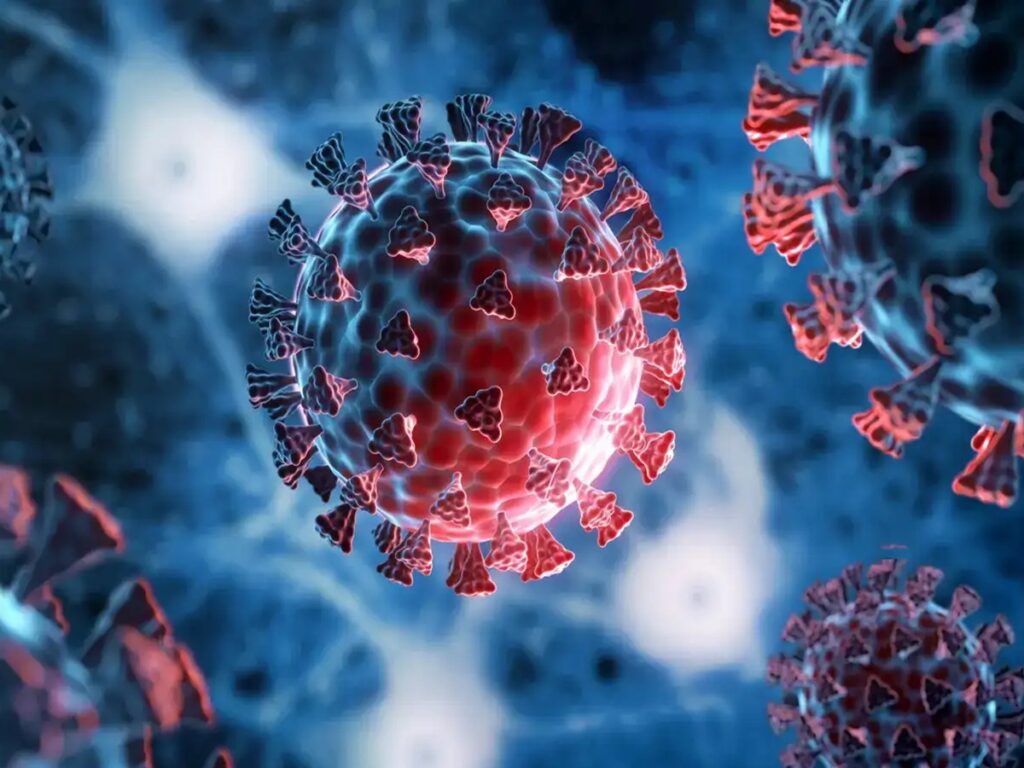India faces a rapid rise in COVID-19 cases, with 3,961 active infections and 28 deaths reported, driven by new Omicron subvariants LF.7 and NB.1.8.1, prompting heightened vigilance in states like Kerala, Maharashtra, and Delhi.
New Delhi: India is witnessing a sharp resurgence of COVID-19, with active cases soaring to 3,961 and 28 deaths recorded as of June 2, 2025, according to the Ministry of Health and Family Welfare. The surge, fueled by Omicron subvariants LF.7 and NB.1.8.1, has hit Kerala, Maharashtra, Delhi, Gujarat, and West Bengal hardest, with Kerala alone reporting 1,435 active cases. Health authorities urge calm, emphasizing that most cases remain mild, but hospitals are preparing for potential escalations with mock drills and increased surveillance.
Rapid Case Surge Alarms States
From just 257 active cases on May 22, India’s COVID-19 tally jumped to 1,010 by May 26 and surged to 3,961 by June 2, a 15-fold increase in 10 days. Kerala leads with 1,435 active cases, followed by Maharashtra (506), Delhi (483), Gujarat (338), and West Bengal (331). Other states like Karnataka (253), Tamil Nadu (189), and Uttar Pradesh (157) are also reporting rising infections. The past 24 hours saw 203 new cases, with Delhi recording the highest single-day spike at 47 cases. Four deaths were reported in the same period, one each in Delhi, Tamil Nadu, Kerala, and Maharashtra. Dr. Rajiv Behl, Director General of the Indian Council of Medical Research (ICMR), stated, “The current rise is driven by Omicron subvariants, mainly LF.7, XFG, JN.1, and NB.1.8.1, but most cases are mild and manageable at home.”
New Variants Under Scrutiny
The World Health Organization (WHO) has classified LF.7 and NB.1.8.1 as Variants Under Monitoring, noting their role in driving infections across Asia, including China and Singapore. NB.1.8.1 was first detected in Tamil Nadu in April 2025, while four LF.7 cases emerged in Gujarat in May. These variants carry spike protein mutations like A435S, V445H, and T478I, suggesting higher transmissibility and potential immune evasion, though they are not yet deemed Variants of Concern. Former WHO chief scientist Dr. Soumya Swaminathan emphasized, “Coronavirus will remain with us. These spikes are expected, but current infections are not severe, and vaccination continues to protect.” Health authorities stress that symptoms, including fever, sore throat, fatigue, and mild respiratory issues, resemble the common flu, with most patients recovering without hospitalization.
Noida and Ahmedabad Hit Hard
In Uttar Pradesh, Noida is the epicenter, reporting 14 new cases, bringing its active tally to 57, with all patients in home isolation. The state has seen three deaths this year, including one in the past 24 hours. In Gujarat, Ahmedabad reported two deaths in three days: a 47-year-old woman admitted on May 23 and an 18-year-old woman hospitalized two days ago for breathing difficulties. Gujarat’s active cases stand at 338. Hospitals in both regions are conducting mock drills to ensure preparedness, with oxygen, beds, and medicines being stockpiled.
Health Measures and Advisories
The Indian government, through the Indian SARS-CoV-2 Genomics Consortium (INSACOG), is intensifying genomic surveillance to track variant spread. States like Karnataka have issued advisories urging mask-wearing in crowded areas, social distancing, and hand hygiene. Delhi Chief Minister Rekha Gupta confirmed 19 patients are currently hospitalized in the capital. Dr. Sandeep Budhiraja of Max Healthcare noted, “These variants are more transmissible but not more severe. Vaccination and boosters remain effective.” The Health Ministry has directed states to enhance testing and ensure hospital readiness, with no nationwide lockdown planned.
Learning from Past Waves
India’s second COVID-19 wave in 2021, driven by the Delta variant, caused severe shortages of oxygen and hospital beds. The current surge, while milder, has raised concerns in rural areas, where healthcare resources remain limited. A 2021 study estimated 4.7 million excess deaths in India due to COVID-19, highlighting the pandemic’s toll. Experts warn that while the situation is under control, vulnerable groups—elderly, pregnant women, and those with comorbidities—must remain cautious. The government’s vaccination drive, with over 1.7 billion doses administered by January 2022, continues to be a cornerstone of India’s response.


